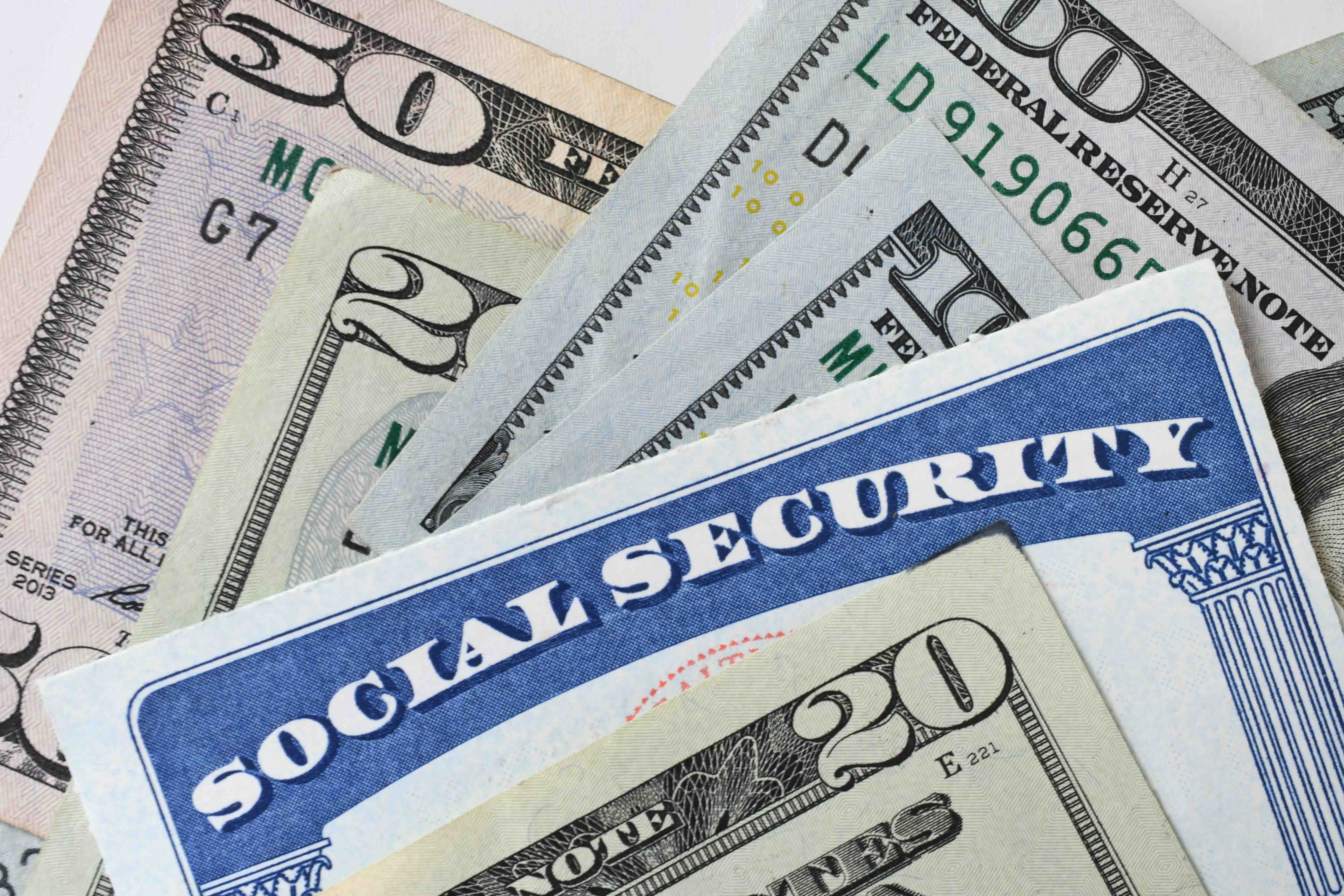December Social Security Payment Schedule: When Is Your Check Arriving?
Your December Social Security benefit will arrive on a specific day in the month, determined by your birth date. This payment is for your November benefit, as payments are made in the month following the one in which they're due.


Your first December Social Security payment will arrive on Wednesday, December 3, and continue through Wednesday, December 24. Beneficiaries who filed claims after May 1, 1997, and receive retirement, disability, or survivor benefits are paid on either the second, third, or fourth Wednesday of the month. You also have a specific payment date if you received benefits before May 1997.
Supplemental Security Income (SSI) payments are distributed monthly, usually on the first day of the month. In December, recipients of SSI checks will also receive a payment on December 31st. Why? January 1st is a federal holiday.
Keep in mind that starting last month, you'll now need to have a direct deposit set up with your bank account or use a Direct Express card, as the Social Security Agency enforces its new paperless policy. The change from paper checks to direct deposit follows President Donald Trump's signing of an executive order that ends the issuance of paper checks by the federal government. The deadline to comply was Tuesday, September 30.
From just $107.88 $24.99 for Kiplinger Personal Finance
Become a smarter, better informed investor. Subscribe from just $107.88 $24.99, plus get up to 4 Special Issues

Sign up for Kiplinger’s Free Newsletters
Profit and prosper with the best of expert advice on investing, taxes, retirement, personal finance and more - straight to your e-mail.
Profit and prosper with the best of expert advice - straight to your e-mail.
If you haven't yet set up direct deposit, learn more about how to easily switch from a paper check to an electronic payment option by visiting Treasury's Go Direct® website or calling the Treasury's Electronic Payment Solution Center at 1-800-333-1795.
Cost-of-living adjustment (COLA) for 2026
The Social Security Administration (SSA) prepares payment schedules before checks are sent, ensuring you receive your payments on time.
The 2025 cost-of-living adjustment (COLA), implemented in January, is factored into your current payment. That means that starting this past January, you should have seen a slight uptick in your monthly Social Security check. In 2025, the 2.5% COLA added a little less than $50 to the average monthly benefit of about $1,900, according to the SSA.
The COLA in 2026 is 2.8%, the government reported in late October. This is one of the smallest COLA increases since 2020, and follows the 2.5% increase in 2025. This increase results in an additional $56 for the average retiree. Married couples will see an average increase of $88.
Social Security Disability Insurance benefits
If you collect Social Security Disability Insurance (SSDI) or retirement benefits, your benefit payment date is determined by your birthday.
If you get auxiliary benefits on someone else’s earnings record, spousal or survivor benefits, for example, your payment date is determined by that person’s birthday, not yours.
If your payment date falls on a weekend or holiday, you’ll receive your payment early. Payments will be issued on the weekday immediately prior to your expected payment date.
December Social Security payment dates
These are the dates you can expect your monthly payments for December 2025 (PDF):
- December 1: SSI recipients will receive their SSI payment for December.
- December 3: You'll receive a Social Security payment on November 3 if:
- You live outside the U.S.
- You receive both SSI and Social Security benefits
- Your state pays your Medicare premiums
- You filed for Social Security benefits before 1997
- December 10: You should receive your Social Security payment on the second Wednesday of the month if your birthday falls on any day from the first to the 10th of your birth month.
- December 17: If your birthday falls on any day from the 11th to the 20th of your birth month, you’ll get your Social Security payment on the third Wednesday of the month.
- December 24 You’ll get your Social Security payment on the fourth Wednesday of the month if your birthday falls after the 20th of your birth month.
- December 31: SSI recipients will receive an additional SSI payment in December.because January 1 is a federal holiday.
Two SSI payments in December
Note: Recipients of SSI should receive two payments in December — the 1st and the 31st — because January 1 falls on a federal holiday.
For a more detailed 2025 schedule, see Social Security Payment Schedule for 2025, and our look-ahead Social Security Payment Schedule for 2026.
Bigger checks this past April
The SSA started sending bigger monthly checks in April, thanks to the Social Security Fairness Act (SSFA), a law signed in January. The SSFA eliminated the Government Pension Offset (GPO) (PDF) and the Windfall Elimination Provision (WEP), which were intended to prevent anyone with a pension from “double-dipping” on federal benefits.
Payments have now been recalculated for certain recipients. Retroactive lump sums were sent this past February, with higher monthly payments starting in April.
If you're affected by the repeal of the WEP, you should have seen an average increase of $360 in your monthly checks. Spouses affected by the GPO repeal should see a $700 increase, and surviving spouses should get a $1,190 increase, on average.
If you qualify, the adjustment to your benefits will be automatic, so you do not need to do anything.
How to report a missing Social Security payment
If you don’t receive your electronic payments on the scheduled date, contact your bank or financial institution. Sometimes, the Social Security Administration experiences a delay in posting your payment.
If you still need help, call the Social Security Administration at 1-800-772-1213 (TTY 1-800-325-0778) or contact your local Social Security office.
Want more guidance on retirement savings? Sign up for Kiplinger's six-week series, Invest for Retirement.
Related Content
Profit and prosper with the best of Kiplinger's advice on investing, taxes, retirement, personal finance and much more. Delivered daily. Enter your email in the box and click Sign Me Up.

For the past 18+ years, Kathryn has highlighted the humanity in personal finance by shaping stories that identify the opportunities and obstacles in managing a person's finances. All the same, she’ll jump on other equally important topics if needed. Kathryn graduated with a degree in Journalism and lives in Duluth, Minnesota. She joined Kiplinger in 2023 as a contributor.
-
 December Fed Meeting: Live Updates and Commentary
December Fed Meeting: Live Updates and CommentaryThe December Fed meeting is one of the last key economic events of 2025, with Wall Street closely watching what Chair Powell & Co. will do about interest rates.
-
 This Is Why Investors Shouldn't Romanticize Bitcoin
This Is Why Investors Shouldn't Romanticize BitcoinInvestors should treat bitcoin as the high-risk asset it is. A look at the data indicates a small portfolio allocation for most investors would be the safest.
-
 I'm a Federal Benefits Pro: I Answer These 2 Questions a Lot
I'm a Federal Benefits Pro: I Answer These 2 Questions a LotMany federal employees ask about rolling a TSP into an IRA and parsing options for survivor benefits, both especially critical topics.
-
 I'm a Financial Pro Focused on Federal Benefits: These Are the 2 Questions I Answer a Lot
I'm a Financial Pro Focused on Federal Benefits: These Are the 2 Questions I Answer a LotMany federal employees ask about rolling a TSP into an IRA and parsing options for survivor benefits, both especially critical topics.
-
 I Retired at 63 to Enjoy My Free Time but My Grown Kids Want Help With Childcare. I Love My Grandkids but It's Too Much. What Should I Do?
I Retired at 63 to Enjoy My Free Time but My Grown Kids Want Help With Childcare. I Love My Grandkids but It's Too Much. What Should I Do?We asked therapists and relationship experts for advice.
-
 5 RMD Mistakes That Could Cost You Big-Time: Even Seasoned Retirees Slip Up
5 RMD Mistakes That Could Cost You Big-Time: Even Seasoned Retirees Slip UpThe five biggest RMD mistakes retirees make show that tax-smart retirement planning should start well before you hit the age your first RMD is due.
-
 I'm a Wealth Adviser: My 4 Guiding Principles Could Help You Plan for Retirement Whether You Have $10,000 or $10 Million
I'm a Wealth Adviser: My 4 Guiding Principles Could Help You Plan for Retirement Whether You Have $10,000 or $10 MillionRegardless of your net worth, you deserve a detailed retirement plan backed by a solid understanding of your finances.
-
 A Retirement Triple Play: These 3 Tax Breaks Could Lower Your 2026 Bill
A Retirement Triple Play: These 3 Tax Breaks Could Lower Your 2026 BillGood news for older taxpayers: Standard deductions are higher, there's a temporary 'bonus deduction' for older folks, and income thresholds have been raised.
-
 10 New Year's Resolutions for Retiring Next Year
10 New Year's Resolutions for Retiring Next YearThese New Year's resolutions will help you retire in 2026 with confidence in your financial strategy.
-
 Think You Know How to Be Happy in Retirement? These 9 Stats May Surprise You
Think You Know How to Be Happy in Retirement? These 9 Stats May Surprise YouWhen it comes to your retirement happiness, don't believe everything you hear. We've turned to solid research for the facts on finding your bliss in retirement.
-
 If You're Retired or Soon-to-Be Retired, You Won't Want to Miss Out on These 3 OBBB Tax Breaks
If You're Retired or Soon-to-Be Retired, You Won't Want to Miss Out on These 3 OBBB Tax BreaksThe OBBB offers some tax advantages that are particularly beneficial for retirees and near-retirees. But they're available for only a limited time.